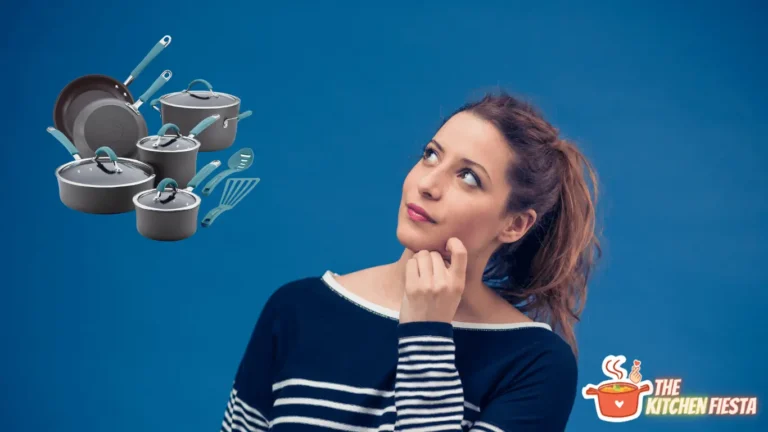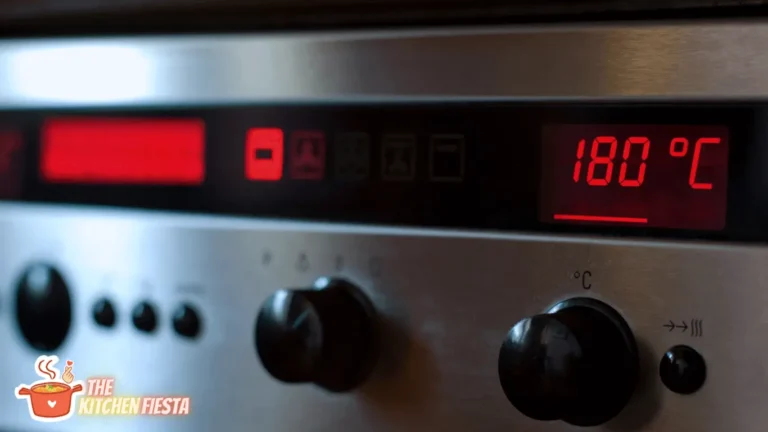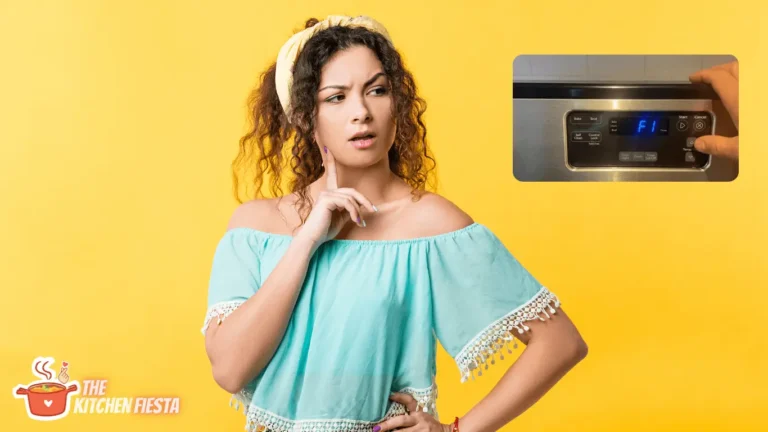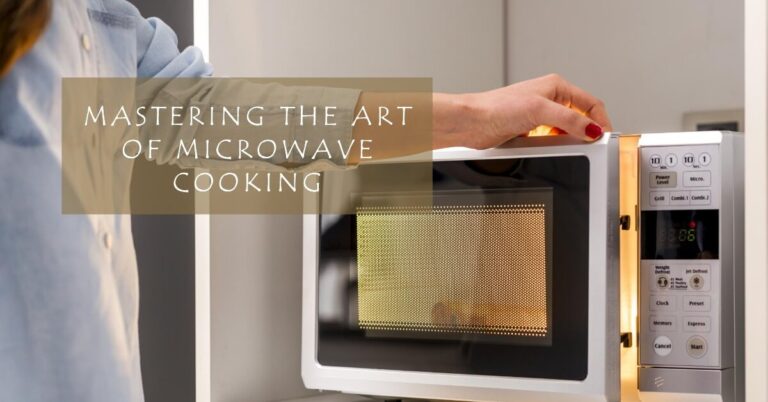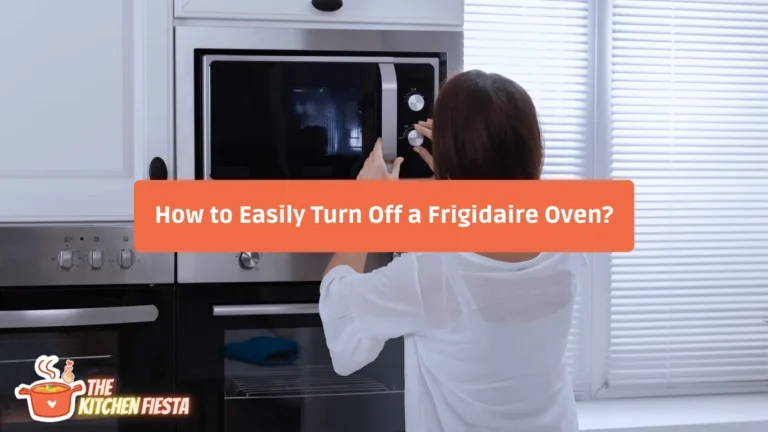Oven Mastery Guide
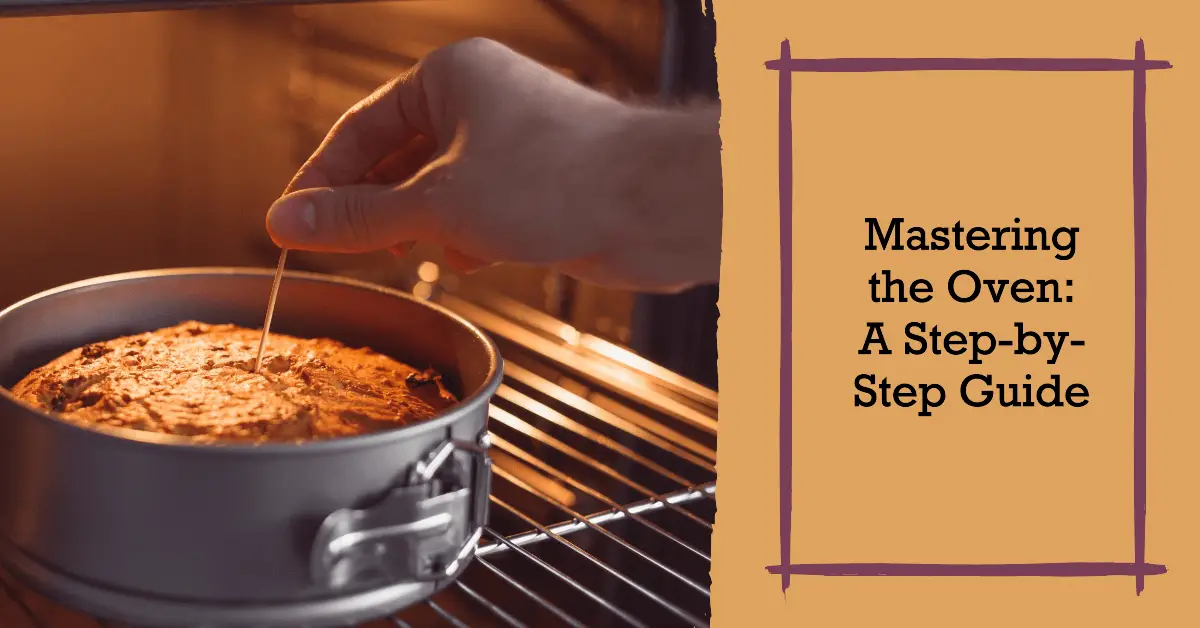
The oven is an essential kitchen appliance used for baking, roasting, broiling, and more. It provides dry, ambient heat that transforms raw ingredients into delicious home-cooked meals. Ovens have been used for thousands of years in various forms to harness the power of contained heat for cooking.
Modern ovens have advanced significantly from simple brick and stone enclosures over a fire. Today’s ovens allow precise temperature control and have features that make cooking quicker, easier, and more versatile. They are available in different fuel types, sizes, and configurations to suit various cooking needs. Understanding how an oven works and choosing the right oven for your kitchen is key to success.
This complete, expansive guide will cover everything you need to know about ovens. It provides in-depth information about the different types of ovens, key features, and functionality, how to use an oven for various cooking methods, cleaning and care, safety tips, and frequently asked questions. Read on to become a true oven master!
Oven Basics
Before diving into the specifics of oven types and features, let’s review some oven fundamentals.
How Ovens Work
Ovens generate dry, ambient heat surrounding food to cook it evenly on all sides. They do this through electrical heating elements or gas burners that warm the air and surfaces inside the oven cavity. The oven cavity is properly insulated to hold heat energy and maintain the set air temperature throughout cooking.
Heat is radiated from the oven’s heating elements or flames into the metal interior surfaces. These surfaces then pass the heat into the air, filling the cavity. The hot circulating air and radiant heat from the oven walls cook food in the preheated oven.
Key Oven Components
While details may vary based on fuel type and features, most ovens contain these basic components:
- Oven cavity – The fully enclosed internal cooking space made of enamel-coated metal or stainless steel. Cavities are properly insulated for maximum heat retention.
- Racks – Metal wire shelves that slide in and out of the oven to hold food. Racks allow air flow and are adjustable.
- Oven door – A hinged, insulated door seals the oven cavity while cooking. Windowed doors allow monitoring without heat loss.
- Heating elements – Electric heating elements consist of bake and broil elements that generate and radiate heat into the oven cavity.
- Fuel source – Gas ovens use natural gas or propane burners set into the oven’s bottom and sides. Electric ovens use 220-240V heating elements.
- Controls and display – Used to electronically set cooking mode, temperature, timer, and other oven functions.
- Ventilation system – Vents moisture, grease, and byproducts from the oven through ductwork.
- Temperature sensor – Monitors the internal oven temperature and communicates this to the control board.
How Oven Heat Is Regulated
The oven’s control board and heating elements work together to achieve and maintain your desired cooking temperature, whether 150°F or 500°F.
Thermostatic sensors inside the oven cavity provide the digital control board with ongoing temperature readings. When the oven is below the target temp, the control board activates heating elements to add heat.
Once it reaches the right cooking temperature, the control board cycles the heating elements off and on again as needed to hold the oven within +/- 20 degrees or so of the set point. This keeps cooking conditions steady.
The gas valve opens and closes for gas ovens to precisely regulate gas flow to the burners to reach and maintain the expected internal oven heat.
Popular Types of Ovens
Ovens are available in several configurations and with different fuel sources to suit your needs. Some common options include:
1. Electric Oven
The most ubiquitous type of kitchen oven uses electric heating elements to generate cooking heat. Electric ovens have bake and broil elements embedded in the oven cavity’s top, bottom, and back walls. They maintain very consistent temperatures, perfect for baking delicate foods. Many households find electric ovens simplest to use and maintain for everyday cooking.
2. Gas Oven
Gas ovens utilize natural gas or propane for fuel. The open gas flame from specialized tubular burners heats the oven’s interior. Gas ovens heat up quicker than electric, and some chefs prefer gas for more customizable high-heat cooking. However, they can be more difficult to troubleshoot and maintain.
3. Convection Oven
A convection oven contains a fan that continuously circulates hot air around the cavity as it cooks. The fan allows air to heat more evenly, eliminating hot and cool spots. Convection ovens cook food faster with excellent even browning. Many also offer a convection conversion feature to adjust standard convection cooking recipes automatically.
4. Double Oven
Double wall ovens contain two full-size oven cavities or one large and one small oven. This provides greater flexibility when preparing multi-course meals. For instance, you can simultaneously roast meat in one oven at a lower temp while baking a casserole or side dishes at a different temp in the second oven.
5. Toaster Oven
Toaster ovens are small countertop ovens that are more energy-efficient than full-sized ovens when cooking small batches. Toaster ovens are convenient for warming leftovers, making appetizers, baking cookies, and more. However, they hold less food and have fewer features than a full oven.
6. Microwave Oven
A microwave oven uses microwave energy instead of thermal heat to excite water molecules and generate internal friction that cooks food. Microwaves allow rapid reheating and thawing but don’t brown or crisp. Combination microwave-convection ovens provide added versatility.
7. Wall Oven
Wall ovens are built-in ovens designed to be installed into a wall space rather than sit on the kitchen floor. They have a seamless look but offer all the same capabilities as their freestanding counterparts. Wall ovens require specialized cabinetry and installation but save space.
Specialized Oven Types
In addition to standard kitchen ovens, there are some more specialized oven varieties made for intensive cooking applications:
1. Pizza Oven
A pizza oven consists of a small, very high-heat oven able to reach upwards of 700°F. They cook authentic stone-fired style pizza with crisp, charred crusts in minutes. Pizza ovens may be fueled by wood, gas, or electricity. Some high-end home kitchens feature them.
2. Steam Oven
Steam ovens introduce water into the sealed cooking cavity, creating saturated steam heat around 100% humidity. This allows quick, even cooking with a moist exterior while retaining more nutrients and flavors. Steam ovens excel at vegetables, seafood, grains, and other delicate foods.
3. Brick Oven
Brick ovens have a masonry dome construction traditionally made from clay bricks or stone. The thick walls retain heat for efficient cooking and baking, especially pizza. Professional and artisanal bakeries may still use brick ovens for old-world quality.
4. Commercial Oven
Heavy-duty commercial ovens meet the demands of restaurants and large-scale cooking with boosted power, ventilation, and durability. Commercial convection and combination ovens offer features like rapid preheating, continuous operation, and programmable cooking.
Oven Fuel Sources
Two main choices when selecting an oven are fuel type and heat source. Here are the key differences between electric and gas ovens:
Electric Ovens
The most common home oven type uses electricity to power heating elements that glow red to radiate heat into the metal oven cavity.
Pros
- Precise temperature control perfect for baking
- Energy-efficient and lower operating costs
- Simple controls and troubleshooting
- No combustion byproducts or gas hookup needed
Cons
- Typically slower preheating than gas
- Exposed elements can be damaged over time
- Not configurable for higher commercial heat output
Gas Ovens
Gas ovens utilize piped natural gas or liquid propane combusted and vented through specialized oven burners to transfer heat.
Pros
- Fast preheat times to get cooking quickly
- High heat output potential for commercial use
- Open flame and radiant heat appeal to some chefs
Cons
- Temperature regulation is not as precise as that of electric
- Risk of gas leaks or carbon monoxide without proper installation
- Harder access for repairs and maintenance
When choosing oven fuel type, consider your cooking needs and preferences, energy costs, safety, heat-up time, and infrastructure in deciding what suits you best.
Oven Configurations
The oven configuration impacts what kitchen space it takes up and how it fits with your range or cooktop. Standard options include:
Freestanding
A completely freestanding oven with full controls can be installed separately from other appliances. Freestanding ovens provide flexible placement but take up more floor space.
Slide-In
Slide-in ovens fit between kitchen cabinets and can be installed directly next to another appliance in a unified range. They maximize built-in appearance while still allowing versatile oven placement.
Drop-In
Drop-in ovens are made specifically to drop into an opening cut into the counter or cabinetry. The rimmed edges sit atop the counter for seamless integration. Professional installation is required for cut-out drop-ins.
Size and Capacity
Oven capacity depends on the cubic footage of usable cooking space inside. Standard ovens hold between 4 to 6 cubic feet and can fit a 25-pound turkey or several baking sheets. Mini and toaster ovens have smaller 1-3 cubic foot capacities for small batches.
Some key measurements:
- Standard single ovens range from 27-30 inches wide, with 25-27 inch interior width.
- Double ovens can be side-by-side or stacked two above the other. Side-by-side doubles take up less height but more width.
- Interior oven depth is typically around 19-21 inches. Height ranges from around 16 inches up to 30 inches.
- Rack positions adjust from 5-7 inches from the floor to 12-14 inches high.
Consider what sizes of cookware, pans, and dishes you bake with to determine the best oven capacity for your household’s needs.
Oven Operating Temperatures
- Most home ovens allow temperature settings from 150°F on warm up to 500-550°F max temperature.
- High-heat self-cleaning cycles may reach over 800°F.
- Commercial ovens used in restaurants can reach even higher temps exceeding 500°F.
- Standard baking temps range from 325°F up to 425°F for most recipes.
- Some specialty ovens, like pizza ovens, hit 700°F or beyond.
Higher and lower temperature settings expand the cooking versatility of the oven for methods like proofing dough at 100°F up to self-cleaning at over 700°F.
Must-Have Oven Features and Functions
Modern ovens come with various features and settings that add convenience, precision, and versatility to your cooking. Here are some of the most useful oven features to look for:
1. Convection Cooking
A convection fan circulates hot air for faster, even cooking results. Convection ovens cook at lower temperatures and allow multi-rack cooking without hot spots. The convection setting is perfect for baking delicate pastries.
2. Self-Cleaning Cycle
Self-cleaning uses extremely high heat to incinerate food soils to ash for easy wipe-down cleanup. This oven feature saves major time on scrubbing greasy buildup. Just remove racks and push a button to clean.
3. Delay Start
Delay start allows you to program the oven to turn on automatically at a certain time. Just load your meal, set the temp and cook time desired, then pick a start time. Delay start lets you wake up to freshly baked goods!
4. Air Fry Mode
The latest oven trend includes built-in air fry capabilities. Air fry modes use convection fan heat to crisp foods with just a tablespoon of oil or less to create all the flavor of fried foods without the grease.
5. Proofing Mode
Proofing provides the ideal warm, draft-free environment for yeast doughs to rise before baking. Taking the guesswork out of proofing makes the oven perfect for artisanal bread.
6. Broiler
A high-powered broiler allows quick cooking and browning under intense top heat. The broiler excels at finishing proteins and veggies and melting and browning toppings.
7. Meat Probe
A meat probe helps cook proteins like roasts, whole birds, and hams perfectly. It monitors internal temp and signals the oven to turn off when the meat reaches your preset doneness from rare to well.
8. Rapid Preheat
Rapid preheat options boost initial heat to prepare your oven for cooking in a hurry. Rapid preheat functions shorten the wait time when you need to get pans in the oven ASAP.
9. Adjustable Racks
The ability to reposition oven racks at different levels provides flexibility. Adjust racks up or down to accommodate various dish sizes and move the food closer or farther from the heat source as needed.
10. Temperature Probe Monitoring
Some high-end ovens allow you to insert a food probe into your dish and program the oven to cook to an exact internal food temperature. This takes all guesswork out of oven cooking.
11. Sabbath Mode
Sabbath mode adapts oven controls to conform to religious laws prohibiting certain actions on holy days. It modifies displays, alerts, and behaviors to keep the oven safe during observances.
Oven Doors, Handles, and Knobs
Several oven design elements impact function and aesthetics:
Door Type
- Most oven doors are hinged at the bottom to swing down when opened. Side-hinged doors are also common. Doors should open easily but close securely.
- Door windows with tempered glass panes allow monitoring of food without heat loss from opening the door frequently.
Door Handles
- Door handles may match the rest of the oven suite, or range handles for a cohesive look. Stainless steel and matte black are common handle finishes.
- Doors may have one larger front handle or complementary handles on both sides for easy grip. Door handles should stay cool while the oven is in use.
Control Knobs
- Oven control knobs traditionally have a circular turning motion and click into place at temperature settings.
- Newer digital interfaces may have touch or push button controls instead of rotating knobs. These keypads frequently offer more cooking modes.
- Knobs should turn smoothly but hold their positions securely during oven use for safety and accuracy.
Using Your Oven: Cooking Methods and Techniques
Ovens can be used for more than just baking cookies and roasting chicken. Different oven cooking techniques allow you to expand your culinary horizons.
Baking
From airy cakes to flaky crusts and melting cookies, baking uses the oven’s dry ambient heat to cook dough-based foods from the outside gently. Baking calls for precise measurements and oven temperatures. Follow recipe guidelines closely and avoid opening the oven door frequently, which can cause sinking from temperature fluctuations. Utilize racks to allow air circulation and rotate pans if browning unevenly. Test doneness with toothpicks or probes for perfect results every time.
Roasting
To roast is to cook something uncovered in the oven, traditionally a large cut of meat or a whole bird, surrounded by high dry heat. The hot air cooks the Exterior while slow-roasting the inside. Meat juices baste the outer layers. Roasting uses lower heat (325°F) to cook through gradually. Place roasts on a rack in a roasting pan to air fry all sides. Larger meats may cook for hours while the collagen breaks down, making the meat incredibly flavorful, juicy, and tender.
Broiling
Broiling involves intense, direct, radiant heat from above that cooks food quickly with caramelized, crispy results. Place food like steaks, chops, chicken, vegetables, and even pizza closer to the upper oven heating element to broil. Keep a close eye to avoid burning. Turn food over halfway through broiling. Finish cooking proteins to save internal temps. The high broiling heat makes it perfect for melting and browning toppings on casseroles or desserts.
Braising
Braising consists of browning meat or vegetables in a pan on the stovetop first, then slowly cooking covered in a small amount of liquid like broth, wine, sauce, or juice in a low oven. The forced steam and liquid keep food moist while concentrating flavors and tenderizing. The oven’s ambient heat completely penetrates the food for fall-off-the-bone meats or ultra-soft veggies and fruit. Braising can take hours but rewards you with a sublime flavor.
Air Frying
Air frying has become a popular oven cooking method miming deep-fried texture and taste with a fraction of the oil. Ovens with air fry settings use a fan to circulate high heat around food on all sides, crisping the Exterior. When air frying, use a tablespoon or less of oil tossed with bites of meat or vegetables. Air frying produces deliciously crunchy results with little messy oil and fewer calories than deep frying.
Pan Pizza Baking
For home-cooked pizza with an authentic parlor flavor, bake directly on a pizza stone or steel. Place the stone on the oven’s lowest rack, then form dough rounds, cover with sauce and toppings, and slide directly onto the preheated stone. The masonry material crisps up the crust beautifully. Use the broiler at the end to finish melting and browning the cheese just right.
Proofing Dough
Create artisanal quality bread and baked goods by properly proofing or rising yeasted doughs before baking. Rather than guess the conditions, use your oven’s proofing mode to maintain an environment between 80-95°F with high humidity and no drafts. Proofing develops flavor and texture so the dough is ready to bake up light and airy with full rise when ready.
Slow Cooking
While slow cookers provide moist, concentrated flavor, your oven can work wonders slowly cooking dishes like shredded meats, beans, soups, and more. Use a heavy Dutch oven or slow cooker and insert a pot to slow cook in the oven. Bring to a boil on the stove first, then cover and transfer to a low 225-250°F oven for long, uninterrupted cooking. The steady ambient oven heat tenderizes meats and melds flavors over 2-6 hours without drying out. Add any vegetables and thickeners at the end. The oven frees up your stovetop and keeps food at a safe serving temperature.
Make-Ahead Meals
Prepare components of dishes ahead when you have time, then use the oven to quickly assemble and bake casseroles or sheet pan meals when needed. Chop and partly cook vegetables or pre-cooked rice or pasta for one day. Store sauces and thawed proteins ready for meals. When dinner time, combine ingredients in oven-safe baking dishes, toss with seasonings, top with cheese or crumbs, and bake until heated and browned. No-fuss assemble-and-bake meals make your oven the perfect tool for easy family dinners.
Reheating Leftovers
Reinvigorate leftovers using your oven’s ambient heat to warm foods without drying them out or making them rubbery as the microwave can. Place servings in oven-safe dishes or wrap in foil. Use low 200-250°F heat to warm leftovers to a safe serving temperature throughout. Cook until hot with a check thermometer for things like meats, soups, and casseroles. The oven keeps textures intact. Add a sprinkle of cheese on top or run under the broiler to give leftovers new life.
Make Your Yogurt
With just milk, yogurt cultures, and a bit of time, you can use your oven to make your yogurt right at home. Slowly heating and holding the milk at between 105°-115° allows the yogurt cultures to multiply and ferment the milk into creamy yogurt. First, scald milk just to steaming, cool to 115°F, whisk in plain yogurt, pour into jars, and hold in your oven for 3+ hours. The oven’s precise low heat results in thick, tangy homemade yogurt.
Dehydrate Food
Your oven can dehydrate, slowly reducing moisture from fruit, vegetables, herbs, and even jerkies. Arrange sliced foods on racks set low in the warm 150-200°F oven. Prop the door ajar with a spoon handle or a foil ball to allow moisture to escape. Turn and rotate periodically to dry food evenly over 4-12 hours. The low circulating heat concentrates flavors and preserves foods.
Cook Multiple Dishes
The spacious oven cavity can hold multiple pans and racks to prepare an entire meal. Make full holiday dinners easier by roasting veggies and meats while baking casseroles, rolls, and desserts. Monitor the doneness of individual items and stagger items requiring more or less time. Convection ovens excel at multi-dish cooking thanks to their airflow. Use your oven’s flexibility to cook big meals with ease.
Oven Cleaning and Care
Like any frequently used appliance, an oven requires periodic cleaning and maintenance to keep it in good working order. Here are some best practices:
- Self-Clean Regularly – Use the self-cleaning cycle to incinerate grease buildup and burn on grime. Run self-clean when the oven is empty for best results. Remove racks first and wipe out the resulting ash after cooling.
- Use Mild Cleaners – For light soils between self-cleaning, spray the oven interior with a baking soda and water paste or mild oven cleaner safe for enameled surfaces. Avoid abrasive cleansers or scouring pads.
- Hand Wash Racks – Over time, oven racks accumulate burnt-on debris that can smoke and cause odors when reheated. Periodically remove racks and wash them by hand or in the dishwasher.
- Replace Burnt-Out Bulbs – Oven lights illuminate your cooking, but bulbs burn out over time. Check manufacturer guidelines for wattage and bulb type before replacement. Handle halogen bulbs very carefully.
- Keep Exterior Clean – Immediately wipe any spills or splatters on the oven’s exterior finish. Warm water and mild soap work for most messes. Check the manual before using abrasives or cleaners on surfaces.
- Clean Glass Window – Glass oven doors accumulate interior condensation and splatter. Clean frequently with glass cleaner or dish soap and water. Avoid scores or damage to the glass surface.
- Watch for Smoke – If you notice more smoke than normal during cooking, remove food and inspect the oven for debris that may be burning on heating elements. Clean any burnt residue.
- Check Door Seal – Ensure the oven door seals tightly without gaps, allowing heat escape. Replace worn door gaskets to maintain good energy efficiency.
- Freshen Smells – For odors inside an empty oven, place a small bowl of lemon juice and water and heat at 200°F for 30 minutes. Steam and citrus freshen the oven naturally.
- Confirm Proper Airflow – Ensure vents are not blocked so ventilation can work properly. Check the hood filters if you have a range oven and clean if needed.
Oven Safety Tips
While ovens simplify cooking and add convenience to your kitchen, they generate high heat and expose hot surfaces. Observe some safety measures when using your oven:
- Operate ovens with children safely away and never leave kids unsupervised near a hot oven.
- Place oven racks in the proper positions before preheating. Use an oven mitt to adjust racks when hot.
- Pull out racks and pans to add or remove food to avoid reaching into the hot oven cavity and risking burns.
- Open the oven door slowly to allow hot air and steam to escape before looking and reaching inside.
- Ensure pot handles are turned inwards on the stovetop and oven to avoid bumping them and knocking off hot contents.
- Keep appliance cords, towels, packaging, and other combustibles away from oven heating elements and range burners.
- Avoid overloading oven racks, which can lead to spills. Leave room for air circulation.
- Use dry oven mitts, pads, or gloves when handling hot pans. Wet or filthy mitts can transmit heat.
- Don’t leave food in the oven for 2 hours before and after cooking to avoid foodborne illness.
- Clean up grease in the oven regularly to avoid buildup that could catch fire.
- Turn oven controls OFF when finished cooking. Pull knobs out or activate oven locks to avoid accidental activation.
Oven Troubleshooting Questions
Review some common oven problems and solutions:
My oven won’t turn on. What should I check?
If your electric oven doesn’t turn on, check that the appliance is plugged in, no fuses are blown, and the circuit breaker hasn’t tripped. On a gas oven, ensure the gas line shut-off valve is open. Try rebooting an unresponsive electronic control panel. If problems persist, call for service.
Why is my oven taking so long to preheat?
An oven that struggles to reach a set temperature could have dirty or worn-out heating elements. The buildup of elements slows heat transfer—clean dirty electric elements with an oven cleaner. Have old elements tested and replaced if out of spec.
I smell gas when my oven is on. What should I do?
If you detect gas while operating a gas oven, immediately turn off the appliance and open windows. Never ignite the oven or anything else that could spark an explosion. Leave the home and call 911 and the gas company. Only return once the leak is fixed.
My oven is smoking excessively during use. How do I fix this?
Heavy smoke usually indicates food drips and grease buildup burning on the oven heating elements. Remove elements if possible and scrub away debris. Run a high-heat self-cleaning cycle to incinerate any remaining grease, leaving just ash to be wiped up. Avoid plastic, liquid cleaners, and cold water on hot elements.
There is cracking and bubbling on the inner oven walls. What causes this?
Over many years of high-heat use, the enamel coating inside oven cavities can chip, crack, or bubble from normal wear and tear. Gently sand very small flaws smooth. The oven interior may need professional resurfacing or replacement for large areas of damage.
Why is my oven making a loud fan noise?
Strange fan noises from your oven are typically caused by a failing convection fan motor, obstructions blocking the fan blades, or loose fan mounts. Have a technician inspect the fan and replace parts as needed. Unplug electric ovens before any inspection.
Why are my cakes and cookies burning on the bottom?
If baked goods are over-browning just on the bottom, the oven’s bottom heating element likely needs replacement. The bottom elements wear out over time. Have old elements tested and change any out-of-spec for more baking.
Final Thoughts
Ovens are workhorse appliances that can expand your cooking abilities beyond baking. With all the options for fuel sources, sizes, and features, selecting the right oven for your needs and kitchen is an important decision. Consider how you cook, what functionality matters most, and which oven attributes fit your lifestyle before choosing.
With proper care and maintenance, a quality oven can serve your household for years of cooking versatility. Use various oven techniques to prepare everything from crispy roasts to melty casseroles to freshly baked bread. Become an oven expert by understanding all these tips for maximizing this essential kitchen appliance.

